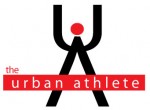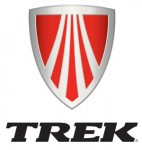Audience: Therapists and Patients
Purpose: This post is video overview of the sample exercise progression I might advocate for patients (primarily runners) who present with persistent longstanding high hamstring pain.
Background
Runners, particularly faster runners, will often present with high hamstring tendon pain. The pain is typically felt where the muscles insert into the bottom bone of the hip (the ischial tuberosity). In addition to the hamstrings the adductor magnus can often be involved.
Patients will feel pain with running (particularly at speed), pain when pulling their shoe off with the foot, often pain with sitting and even some pain getting out of a chair. When I see these patients they have often had this condition for months or years.
When the pain has been around for months you may want to consider this dysfunction a failed healing response. Throw the ideas about inflammation out the window. These patients have rested their leg and even done some remedial exercises but to no avail.
The exercise approach is simple – TISSUE RESPONDS TO LOAD. Injury treatment is the judicious application of stress – applying this stress to an injured tissue is stimulus for adaptation. This application of stress to the non-responding tissue (i.e. your hamstrings) can be complimented with all other treatment techniques and assessments. In addition to applying stress we also want to try the find the cause of the initial hamstring overload (Good luck). Some possibilities being:
1. Weak glutes
2. Poor trunk strength/endurance/control
3. Restricted joints anywhere (feet, fibular head, SI joints, Thoracolumbar junction)
4. Excessive anterior tilt while running (motor control or tight passive/active tissues?)
5. Overstriding
6. Understriding and “hanging” on to your hamstrings when running (rare)
7. The big daddy – too much, too soon, for you at that point in time.
8. Poor tissue quality (sometimes our muscles and tendons just need a little rubbin’ lovin’ e.g. ART, myofascial, Gua Sha, Acupuncture, general massage)
OK, enough lecturing, you are still in pain
My clinical take is that many athletes get issues 1-8 somewhat taken care with usual care. (This assumes it is not crappy run of the mill care where someone sticks ultrasound and a TENS machine on you and then tells you to stretch). After the usual care (which is the non-horrible kind) patients are then given remedial exercises for the hamstrings (stretching, bridges, curls) but they still aren’t responding.
With these recalcitrant cases we often then need to stress the tissue harder (or find the other key link in the dysfunction). Inspired by the painful eccentric loading protocol’s variable success in tendon pain (a nice review here and here) I choose to ignore some of the eccentric loading exercises alone and also add heavy resistance training. For my patients, eccentric loading means that you just work a muscle as it gets longer not as it gets shorter. It is like lowering a weight but never picking it up again. It never made sense that concentric exercises would negate the benefits of eccentric exercises and why would daily loading be necessary? (Update: I should listened to Jill Cooke’s podcasts (search on itunes if you care), she is an amazing tendon researcher and has been saying this for a long time). I had good success with heavy resistance training but did not have any research to support it. Fortunately, I found some (click here on a comparison of heavy resistance training versus painful eccentric loading), so I can go back in time and support my previous views and say I was evidenced-based(this is definitely some confirmation bias on how I select the papers that I read).
Here are some exercises that I often recommend for runners
A warning, don’t do these willy nilly. Have your therapist or strength and conditioning coach guide you through these exercises and create the appropriate parameters (how much, how often etc). Not all of these exercises are meant to be done on the same day. Work with a professional to create a program. You can also be doing a lot of other exercises for your core or upper body.
If you are my patient and aren’t sure, email me.
Stage One (2 weeks)
Rationale: Train the glutes, get the hamstrings ready for more load, train the trunk, say hello to the external hip rotators
Bridge Series (Front to Side)
Back Bridge
Bird Dog
ClamShell
Squats with External Rotation
Perform the squat as seen in the video below but have tubing around both knees. When squatting down attempt to press the outside of your knees against the tubing.
The squat in the video is not ideal. You DO NOT want the knees to start the motion. The first motion is the butt going backwards with the weight through the heels and the balls of the feet. The squat starts with a bow or a “hip hinge”.
Hip Flexion Drives
Put a cable or tubing around your knee. Drive your knee forward training your hip flexors. If you can do 15 easily then add more weight. Try to not let your spine bend forwards or backwards.
Cabled Hip Extensions
This exercise attempts to mimic the function of the hamstrings during running. The hamstrings and glutes work to pull the swinging leg backwards toward the ground and support your weight during foot strike. Hamstring strains occur during this phase. Click on this link for a post about hamstring function during running (click here).
With this exercise you want a cable or tuning tied around your ankle. You then pull your leg backwards with your butt and hamstring and slowly return your leg back to the start. Try not to arch your back during this exercise. Focus on feeling tension in your hamstrings and glutes. You will also feel this in the leg that is standing on the ground. For balance it is OK to grab onto something while doing this exercise (it will also take the strain off the leg that is on the ground).
Stage Two Learning Phase(weeks 2-6)
Repetitions: 8 to 12 (2-3 repetitions shy of muscle failure or form breakdown)
Sets: 1-2
Bridge Series (Front and Side)
Back Bridge Walkouts
Deadlift Learn (light weights)
One Leg Deadlift
Hip Airplane
Cabled Hip Extensions
Cabled Hip Flexion
Stage 3 (weeks 6 to 12)
Repetitions: 4 to 8 (1-2 repetitions shy of muscle failure or form breakdown)
Sets: 2-3
Nordic Hamstring Curls
Bridge Series (Front and Side)
Single Leg Bridge Eccentric Slide Outs
Deadlift
One Leg Deadlift
Hip Airplane
Cabled Hip Extensions
Cabled Hip Flexion




[...] b. Hamstring Strain or Tendinopathy Exercises [...]